Evergreen chlorophytum: home care
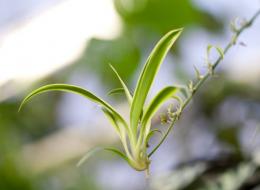
Chlorophytum is a very common unpretentious plant that grows on the windowsills of almost every house. Everyone probably remembers from childhood bright colorful bushes consisting of long linear leaves and several arrows with small rosettes at the ends. Sometimes it was with this unusual, but such a popular plant that many young housewives began their passion for indoor floriculture.
Despite the fact that over the years, chlorophytum has somewhat faded into the background, it has not lost its relevance, thanks to the remarkable qualities of an active home air purifier. It is this “all-consuming” flower that doctors recommend for growing in maternity hospitals, hospitals and preschool institutions.
They say that a plant variety such as Chlorophytum crested absorbs hydrogen oxide up to 90-95% and serves as a kind of filter in places where construction or repairs are taking place, in rooms located near noisy and busy highways.
Biologists say that one flower optimally purifies the air by 5.5-6 m3, so in a ten-meter room it is enough to install four flowerpots with a plant to provide the room with clean air. And, of course, chlorophytums of different varieties would look aesthetically pleasing in the interior.
Content:
Varieties of chlorophytum
At home It is customary to grow several varieties of chlorophytum:
- The most famous of them are Crested and Capri. Both plant varieties are limited to the green color of the leaves, and during flowering they strew the crown with numerous stems with “babies”. Both Crested and Cyprus chlorophytum are a monochromatic, but very effective cascade of leaves and inflorescences:
- Variegated varieties of chlorophytum - laxum, variegatum, grasslike, mandaianum and vittatum. They are very popular among lovers of both home and garden floriculture.
- Such varieties, like Curty Locks and Bonnie have not only beautiful longitudinal stripes, but also a decorative wide curly leaf. White stripes in color can be along the edge or in the center of the leaf. The plants are very unusual and are recognized as perhaps the most beautiful in the chlorophytum genus.
- Such varieties of chlorophytum as Orchitostar and Winged have a wide leaf at the base and a rich pinkish color. The leaf fades to orange and has yellowish veins, creating a delightful visual effect and color contrast.
Home conditions

IN summer time period chlorophytum, care at home requires placement on the sunny side of the house or apartment, slightly shading the window sill. If the plant was purchased for display in the garden, choose a shaded part of the garden under the canopy of trees. In winter, additional artificial lighting is necessary for good flower growth.
The first signal that chlorophytum is not receiving the proper amount of light is that the leaf begins to lose its rich color and turn pale, eventually showing a slight yellowness at the ends.
The slow growth of newly transplanted chlorophytum also indicates that the plant is placed in conditions that are uncomfortable for it.Either the lighting is not enough for rapid growth, or the flower pot is too large.
It happens that there is too much lighting in the place where chlorophytum is located. The behavior of chlorophytum in this case is also non-standard - the leaf is covered with colorless spots bordered by brown or dark gray stripes.
You need to know when purchasing
First of all, you need to decide in which room the plant will be located, and, therefore, to what size it can grow with proper care. Some varieties of flowers in a developed state do not reach 40 cm in height, while others (such as Carp and Winged chlorophytums) can grow up to 80 cm.
Having decided which flower to choose, it is necessary to take into account that not every plant has the ability to reproduce a plant with “children”. Some varieties reproduce exclusively by bush division.
Before you bring a plant home, you need to decide on its place of “residence.” For good growth of variegated plants, daylight should be at least 12 hours; green-leaved chlorophytums feel comfortable in slightly darkened conditions and rooms.
Transplantation and propagation
If the plant is just brought home from the store, it needs to be transplanted immediately. Chlorophytums, which do not divide into “children”, but have voluminous lush bushes, can be immediately divided into several plants when transplanted.
It is better to choose a ceramic pot for chlorophytum. If the flower is purchased for hanging on a loggia, terrace or veranda, you can purchase flower pots. The only condition when buying a container for a plant is its strength, since the root of the plant is so powerful that it can easily split thin plastic.
When well cared for, such plants look great on tall flower stands and bromeliad trees. An excellent solution for young plants is replanting them in pots with tall mature palm trees - dracaena or yucca. The crown of palm trees will protect small chlorophytums from direct rays, and the effect of such a decorative solution is simply amazing.
During the growth process, chlorophytums must be replanted, because if the flower pot is too small and cramped, it will simply stop blooming. Replanting is carried out once every 2-3 years, and the soil chosen for this is mixed - turf soil (3 parts), humus (1 part), sand (1 part).
After the plant is transplanted, it must take root. To achieve quick results, you just need to water the chlorophytum regularly. Water for irrigation should be in the range of 180-200. And for a rooted plant, watering should not be carried out with water below 100C.
In the spring, some varieties of chlorophytum require feeding, but experienced amateur gardeners know that by watering the plant with melt or rain water at room temperature, you can completely do without additional fertilizer. However, if watering is done only with settled tap water, it is recommended to feed the chlorophytum once with low concentration fertilizers for cacti or ornamental foliage plants in the usual dosage.
Useful tips
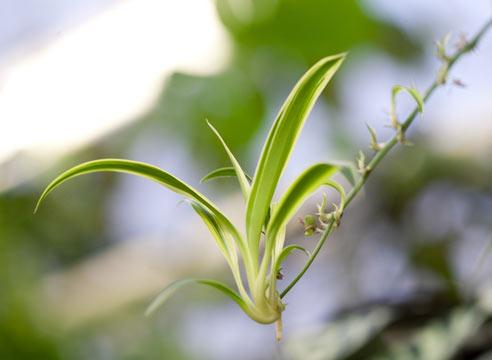
- Some chlorophytum lovers claim that when a plant produces too much many arrows, it weakens, and the leaf begins to turn pale. However, only sick and weakened flowers are susceptible to this. A healthy plant, provided with proper nutrition and lighting, feels great, giving new arrows and rosettes.Gardeners have noted some specimens of chlorophytum that have grown up to 2 meters in diameter, thanks to the shooting of arrows.
- Do not spray the leaf in direct sun. This leads to leaf burns and subsequent wilting. And overfeeding with fertilizers provokes a constant painful state of the plant with the appearance of pests on the leaves - scale insects, aphids and mealybugs.
All about the benefits and unpretentiousness of chlorophytum in the video:
Interesting information about the vegetable garden

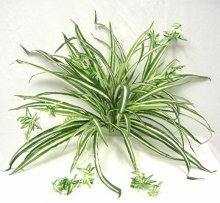
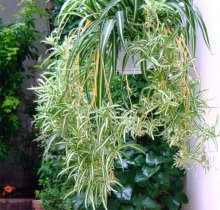
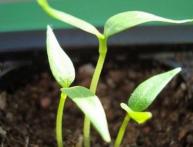
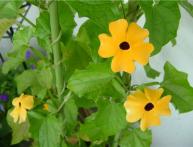

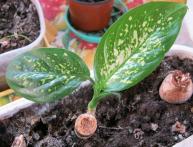
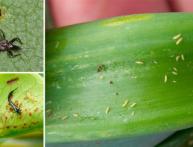
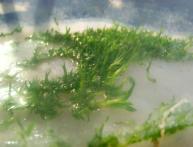
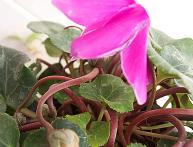
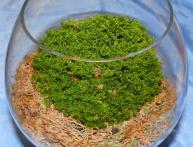
Comments
The plant is simply indestructible. An ideal option to create a large amount of green mass in the interior.